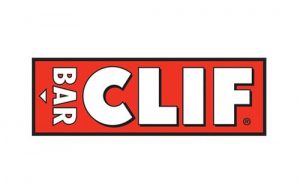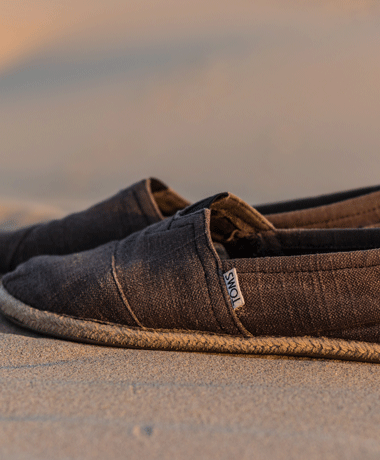In our Brand Story Hero series, we shine a regular spotlight on different brands that we think tell their story well. Here we take a look at Clif Bar & Company, an environmentally conscientious and empowering company.
Brand: Clif Bar & Company
Industry: Food
Product: Nutritional Energy Bars
Founders: Gary Erickson and Kit Crawford
Year Founded: 1992
Mission: “Striving to create a healthy and sustainable food system. Ensuring our brands and business are healthy so that we can do more good. And caring about the people, places, and communities we touch”.
Their Story
Their brand originated from an idea that struck Gary Erickson, one of the founders during a one-day 175-mile bike ride. During his cycling journey on the ‘Epiphany Ride’, Gary realised that he couldn’t choke down another unappetising energy bar. From this, the idea for a better tasting bar was born.
Following this, Gary returned home where he spent six months trying to create the perfect recipe for the first batch of Clif Bars. Soon after, the bars hit the shelves. Gary decides to name the bar after his father, Clifford, who introduced him to the wilderness adventures and encouraged him to follow his passions in life.
How Their Company Evolved
In 2000, Gary and Kit declined a $120-million offer to sell the company so they could do more good in the world instead. They decided to remain as a family-owned business rather than selling themselves off a big multinational corporation.
From there, Clif Bar & Company continued to grow. Their company expanded more and more over the years and incorporated a variety of projects into their business. Some of these projects included paying their employees to participate in their volunteering and community service scheme called Project 2080. In 2001, Gary and Kit realised that sustaining their business, their brands, their people, and their communities, and the planet, is a better return on investment than one bottom line. From this idea, the two birthed their ‘Five Aspirations Business Model’. These five aspirations empower a creative, healthy, and sustainable lifestyle and food system. They also ensure that their brand and business is healthy so that they can do more good for their customers and communities they’re engaged with.

In 2004, they recognised the importance of creating a nutrition bar that meets the needs of active kids. For this, they created the organically produced Clif Kid Zbar line. Following this, they continued to expand their business by investing more in their local communities to establish the Clif Bar Family Foundation. This allowed them to support innovative small and mid-size nonprofits that give back to their communities.
Clif Bar continued to thrive and gain success across Europe and the United Kingdom. Later years saw the company become green for future generations whereby they opened their certified “green” headquarters.
Are you interested in finding out more about storytelling for business purposes? Check out our Storyteller’s Manifesto here and be sure to apply for your FREE copy today!
Their Storytelling Lessons
Clif Bar & Company use storytelling to empower a different kind of company. Their founder, Kit Crawford states that, “We’re working to run a different kind of company: The kind of place we’d want to work, that makes the kind of food we like to eat, and that strives for a healthier, more sustainable world – the kind of world we’d like to pass on to our children. And those aren’t just words. They’re our mission statement.”
Through their narrative, they are able to empower their 5 aspirations and key food values for a more sustainable, inclusive, energetic and environmentally conscientious business. Check out below how they use storytelling to promote their business and the communities in which they work.
#1: Sustaining their business
Clif Bar uses its platform to narrate their products in a way which helps them to build a healthy and resilient company. This then allows them to invest more in their communities and charity projects in the long term. By doing this, it empowers them to be a catalyst for change and to do more good in the world.
#2: Sustaining their people
For Clif, they refer to their company as a family. For them, there is more to work than work. As a family and employee-owned business, Clif Bar strives to take care of its people by working side by side and encouraging each other. Clif encourages people to bring their passions to work rather than leaving them at the door.
#3 Sustaining their brands
Clif put an emphasis on listening attentively to their customers. Whether they be athletes, foodies, or families, they ensure to provide healthy and high-quality products for each type of person. They craft their food for all of life’s adventures. They are committed to providing organic and sustainably sourced ingredients. Clif state that they never lose sight of the fact that all the food from each of their brands is a tasty expression of their values and helps contribute to a healthier and more sustainable planet.
#4 Sustaining their communities
Clif uses storytelling to connect themselves with both local and global communities. From the volunteer work they do locally to the way in which they source ingredients globally, their commitment to their communities is an important part of their story.
Through community driven initiatives, Clif volunteers their time to empower local communities and ensure that their voices are being heard. As well as this, they also take time out to tackle projects focused on food, housing, and environmental restoration.
They also encourage their employees to volunteer their services in the community on company time. In 2016, they exceeded their goal of 11,400 hours of volunteering.
By using a storytelling approach to community involvement, Clif is able to foster an inclusive culture which is generous from the inside out.
#5 Sustaining the planet
Clif is inspired by the challenge of running a business based on ecological principles. For them, their model for sustainability is based on four simple words which convey a story: Think Like A Tree.
Through their storytelling approach to business, they are able to foster an environmentally conscientious mentality towards renewable energy and sustainability both in the workplace and in their communities. By thinking like a tree, this allows Clif to work hard to craft food with organic, sustainable ingredients made with renewable energy, packed in eco-friendly packaging, and delivered by transportation that doesn’t pollute.
“And you thought you were eating just a bar?”
Clif also uses a storytelling approach to promote their product and generate a widespread awareness among their customers of the importance of eating and living healthily. Since their establishment in 1992, they have been crafting recipes to provide the nutrition of our bodies needs. This also supports their larger purpose to create a more healthy, just, and sustainable food system. Their three pillars or values come to life through their food.

Positive energy
Not only is their food irresistibly delicious, but it is also nutritious too! Whatever activities you are engaging in, Clif promises to deliver a product that best suits your needs. They start this nutritional story from their kitchen whereby they create tailored-made recipes that help their customers get going and stay moving. For Clif, the real story is an adventure in which the energy their bars provide you takes you on.
Environmental stewardship
As a business who admires the outdoors, protecting the environment has been an important part of the company from the start. Since their establishment, they committed themselves to source organic ingredients and sustainable agriculture.
Champions of change
For Clif, progress is baked into everything that they do. All of their employees are owners of the company and share its success. As well as their narrative approach to business, they also provide a variety of training programs that further engage their employees with their brand. They invest in sourcing practices that drive long-term value for communities where we source, work and play.
Clif Bar & Company use a storytelling technique to cultivate better relationships both internally with their employees and externally with their customers. They use storytelling to engage with their local communities and with charities.


